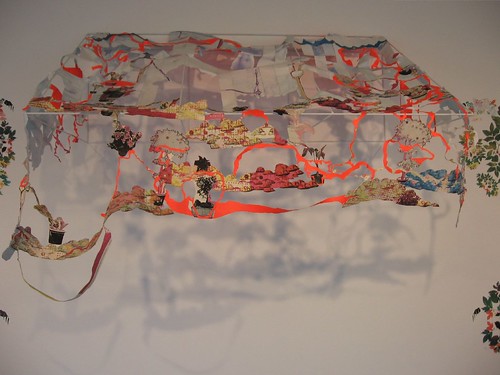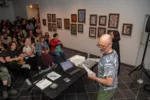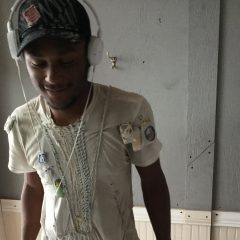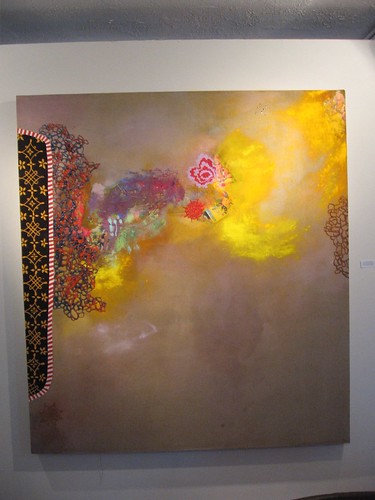
Jackie Tileston, Opera Brain Incantation, mixed on linen
Gardens become figments of the imagination on the shortest days of the year. So naturally, a show about gardens that begins as the days shorten and ends before they lengthen turns my thoughts to the divide between art and the real thing–any real thing, any art.
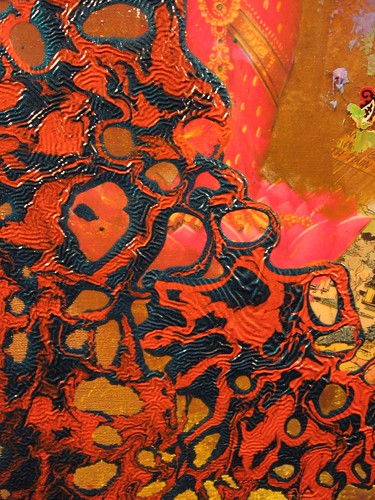
Jackie Tileston, detail, Opera Brain Incantation, mixed on linen
The exhibit is Garden in Winter, a small group show featuring work by six artists–Jackie Tileston, Margery Amdur, Bill Scott, Robert Straight, Carole Sivin and Diane Pieri–at Hopkins House in New Jersey.
Each artist takes a different approach to creating something that passes for or is inspired by nature. But this is not a show of garden landscapes–of pictorial perspectives and trompe l’oeil or photographic realism. It isn’t even a show of impressionism.
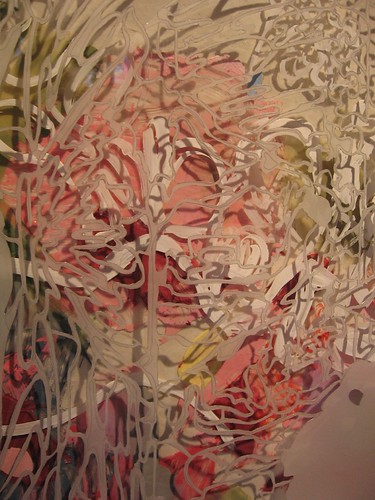
Margery Amdur, detail, Wisp #1 acrylic, mylar
It turns out to be a show about what all art shows are about if they are any good. It’s a show about the artist’s mind, the material in front of us, and the relation between the two. It’s about taking something and making it make us think of something it is not. It’s about creating a new object that never existed before, and the best of the work is also about creating a new object that could never have been made prior to present times.
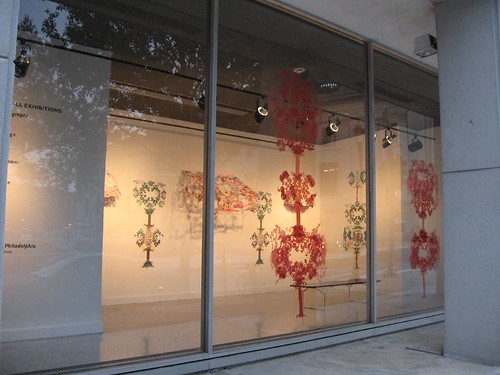
Eva Wylie’s installation, looking in, at Moore College
I don’t know that my mind would have gone in this direction if I hadn’t seen Eva Wylie’s outstanding installation at Moore College of Art (it came down Dec. 9). Wylie created a patio in the front-window installation space on Race Street, but there were no bushes in this bower. Turning installation on its head, Wylie’s posies and topiaries were 2-D images on the walls and windows. The only 3-D elements were the room itself, a garden bench, and two awnings made from scraps of paper covered with images.
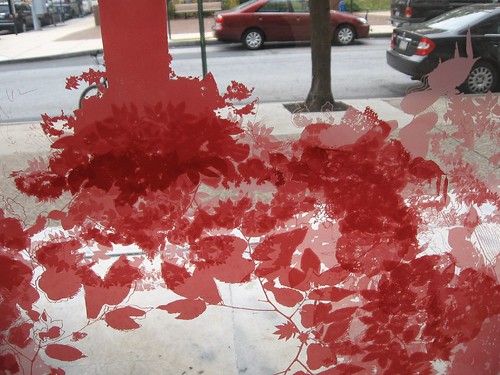
Eva Wylie’s installation, looking out through pretend nature to some real nature (not to mention cars and paving)
Wylie’s silkscreened imagery comes from the information ephemera of our society–magazines, the internet, photographs. But the closer you get to them, the less they seem to be there. There’s a deliberate insubstantiality that stands in contrast to the architectural surfaces she decorates. Her work raises questions about art as an entity of its own and as an object of permanence. At the same time, she incorporates the ideas and tastes of the world around her–which are also transient.
To be fair, the work in Garden in Winter (up until Jan. 12) is not about the transience of the art object. But that relationship between what is real and what is representational and what is something else entirely is a key element in the show.
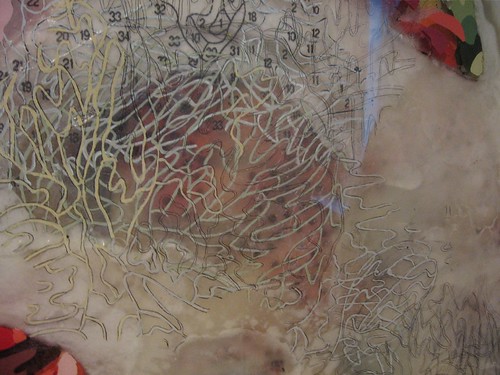
Margery Amdur, detail, #1 From the series Surrogattes, acrylic, mylar, wax and resin
The work from Margery Amdur and from Jackie Tileston may have some garden in their imagery, but they are thoroughly about materials and art and acts of synthesis and creation. Amdur is more Western-art historical in her bordering-on-baroque imagery, her references to paint-by-numbers, and her fabulous layering–either using resin or cutting layers of mylar (or embedding mylar in the resin). The work is lush and irresistable as it slips away from direct representation into its own identity as a thing, containing real shadows and indefinable spaces.
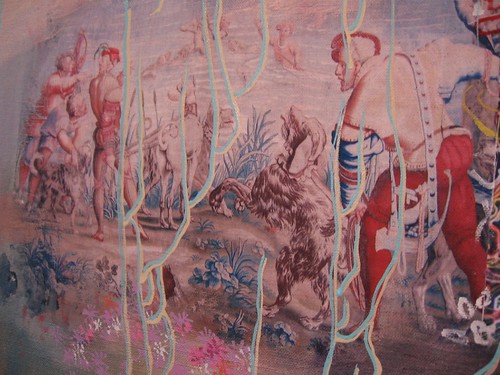
Jackie Tileston, detail from Trade Routes, mixed on linen
Tileston pulls her imagery from beyond the Western canon, exploring the Asian and South Asian imagery that also influences her own work. She unites rich saffrons and flocking mandalas and dripping jewels. She embeds cartoons and images from Asian popular culture as well as classic images. The rest is a feverish imagination creating floating worlds of non-perspectival landscape and Turner-esque eddies of paint. She has to have the widest variety of paint handling ever in her work.
Pieri, who also takes a page out of the Asian art handbook, on assembled sheets of bark-like Amate paper paints a narrow strip of landscape that floats up into an enormous sky, with a bar of Asian logo-like symbols along one side. But here the elements don’t quite merge. Another painting uses floral and decorative motifs that suggest murals.
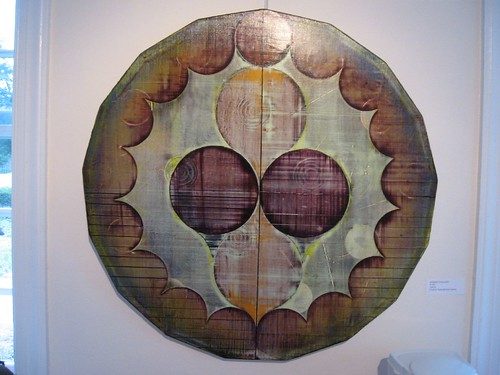
Bill Scott’s linear etchings have the scratchiness of hay and twigs in their making. Robert Straight’s precise, spirograph-inspired works on panel suggest a magical connection to his materials in his mandala-like imagery. And Carole Sivin’s paper sculptures mix natural and manufactured forms that reference life–from spiders to people–in the garden.
I have seen many of the pieces in the show before, but the combination was a treat.


